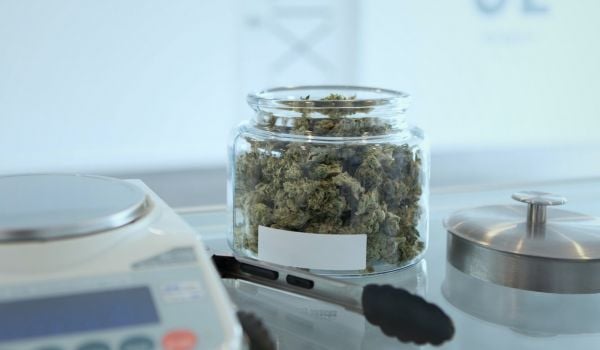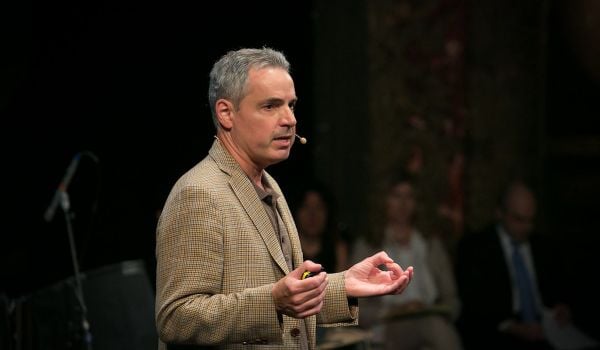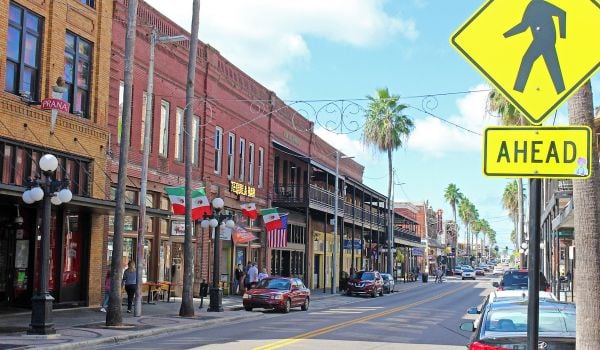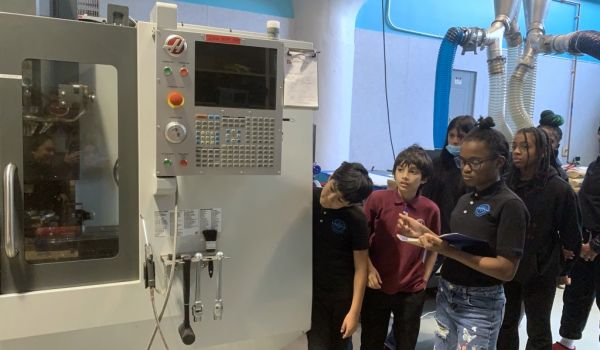When I was in sixth grade, my father’s horn woke me up early one Saturday morning for what would be, up to that point, the most pivotal day of my life. My father, who’d split with my mother three years earlier, had arrived to drive me across town to Archbishop Carroll High School where I would take D.C.’s private school entrance exam. There was only one school that my father was interested in having me attend: Sidwell Friends.
By the 1980s, Sidwell had already become the private school of choice for a small group of black families in my Shepherd Park neighborhood. Looking back on that time I can certainly see why. Although all of our parents had clearly benefited from the civil rights era, they didn’t harbor any illusions about the permanence of their gains or the challenges that still stood in our way. President Reagan was a fiercely vocal civil rights opponent, crack was flowing freely through the D.C. streets, and South African apartheid stood as a striking reminder of the violent bigotry they’d faced in the southern towns and cities where they’d grown up.
Of course, at 12, I didn’t care about any of that. What mattered was that several of the neighborhood boys who I looked up to already went to Sidwell and would often wear their school gear at the Shepherd playground. That a school could afford to produce its own tracksuits, hoodies, shorts and shirts fascinated me. But what I was really enamored with was the sprawling campus. From fourth through sixth grade, I attended Hearst Elementary School, which sat directly across, and literally below, Sidwell. From my vantage point, I could see legs and the occasional shoulder sprinting along the track in spring, hear the roar of the crowd during football season. To me, Sidwell may as well have been a castle in the sky.
Over 25 years have since passed, but if I try hard enough I can still feel the pit expanding in my stomach as my dad drove me through the sleepy city streets, the vertigo I contrived as we were led to the school’s cafeteria, the utter and complete dread I tasted when I saw a million (not really, but you get the point) kids armed with their No. 2 pencils sitting at the ready. My father kissed me on the forehead and wished me luck before he left. It felt like the first day of kindergarten all over again.
Rejection was all I could think about. It’d be one thing if no one knew that I was applying, that I wanted in. How would I show my face at the playground? What would the neighborhood parents think? More importantly, where would I go to school if not Sidwell?
A few weeks after the test, my dad and I ascended the steps and entered the glass fortress of Sidwell. After an interview, I was assigned a buddy for the day. That he was a black student, to be perfectly honest, came as a relief. There were questions I needed to ask that I figured only he could answer. He gave me a campus tour. It was even bigger and more beautiful than I had imagined. It just didn’t seem fair that such a place existed. The very idea of returning to my humble elementary school the next day depressed me.
Toward the end of the day, my buddy brought me to the locker rooms where he introduced me to the coaches. Quite naturally, they looked me up and down and asked if I played sports. Sensing an opportunity to improve my odds of being accepted, I replied, “Yes, yes I do. I play them all.”
Acquiring My Share of Social Capital

Dax-Devlon Ross and his father
As I marked the 60th anniversary of Brown v. Board this month and thought about the Supreme Court decision banning affirmative action in Michigan last month, I’ve had occasion to reflect on the degree to which Sidwell has influenced my life. Complicated is the only way I can describe the six years I spent there. From the moment I stepped on campus I felt that at least some of my teachers assumed that I belonged in slower classes. I can remember being asked to repeat a math class even though I had a B, and white students I sat next to every day were being advanced with lower grades. I can also recall a physics teacher refusing to advance me to Bio I because, in his words, he didn’t think I could handle it. I spent my entire high school career under the impression that I couldn’t string together a decent sentence.
Socially, middle school was fine. We were all still too young for our differences to matter all that much. But something changed in high school. Money, status and race began to take precedence. At 16, my classmates got brand-new cars or the ones that their parents no longer wished to drive. On weekends, I’d show up at “keg” parties and the very people I sat beside in school treated me like a stranger. Other times I’d only hear about the party after the fact. Dating just was a nonstarter. On top of all that, my father struggled mightily to pay the ever-rising tuition. In my senior year I was removed from class more than once and told I could not return until the bill was paid. I left Sidwell beaten down. I couldn’t wait to get far away from that place and those people. I never wanted to feel that way again.
It wasn’t until I was in my mid-20s that I began to re-think the experience. In middle school, I’d been forced against my will to rock climb and go on camping trips in the Shenandoah Valley. I absolutely hated that stuff at the time. Leaving the city and my friends and all of the action was agony. But as an adult, and to the great amusement of my friends, I live in the woods and regularly go on long, solitary hikes.
Instead of lecturing us about the D.C. homelessness crisis of the late 1980s, my middle-school teachers took us to hand out meals, serve breakfast at soup kitchens, and spend afternoons performing service at shelters for homeless women and children. I considered them ordeals at the time. But when I found myself doing social justice work in my 20s I knew that I’d been touched by those experiences.
Beyond the character building, something else happened during my time at Sidwell. I acquired my share of social capital. In fact, if Brown v. Board promised the equal distribution of educational resources like books and buildings (physical capital) and affirmative action pledged historically disadvantaged groups access to selective colleges and universities (cultural capital), then social capital — who we meet in school, come to know and can later call upon to help us get things done — is the currency that has yet to be fully evaluated, but may well prove the most important asset of them all in the 21st-century economy.
Using Social Capital to Narrow the Divide
Nikole Hannah-Jones’ recent ProPublica report on school resegregation in Tuscaloosa, Alabama, traced the educational journey of three generations of the Dent family. James attended segregated schools all of his life and never went to college. His daughter Melissa, an auto plant employee, attended an award-winning high school that had been integrated by the courts and went on to graduate from college. Her daughter D’Leisha now attends Melissa’s alma mater — only it’s become a low-performing “apartheid” school since a state court dismissed the county’s desegregation order in 2000.
“She believes D’Leisha … would have formed a rainbow coalition of friends if she’d attended the old Central, and made connections that could have helped her in the future,” Hannah-Jones wrote of Melissa’s regrets for her daughter.
I’m perfectly aware that my father put me in a position to form that rainbow and make those connections. Even now, the social capital I acquired at Sidwell continues to open doors for me. Most recently it helped me land an executive director role with the country’s largest afterschool program provider, After-School All-Stars. Founded in Los Angeles 20 years ago by Arnold Schwarzenegger, ASAS now operates in middle schools serving low-income students in 15 major cities across the United States. My job is to advance the organization in Newark and in New York City, which, as it happens, has just entered an historic middle-school afterschool moment thanks to a $150 million budget allocation by Mayor Bill de Blasio’s administration.
So far, my primary task has been finding new schools to pair our programs with. Jill Bloomberg, the principal of Park Slope Collegiate, was one of the first principals I pitched. Bloomberg didn’t hesitate to tell me about her school’s integration experiment. Ten white families from the gentrified neighborhood collectively decided to send their kids to her predominately black and Latino school rather than one of the more selective, well-funded schools that fed into the selective, well-funded high schools (where the alarmingly low number of black and Latino students led the NAACP to file a discrimination complaint two years ago).
It was working, she told me. According to an April New York magazine feature on the Park Slope experiment, the white parents had already spearheaded a six-figure donation drive that every kid in the school would benefit from. Still, there was one problem she had yet to figure out and was hoping I or someone else could help her solve: how to create the conditions for her black and brown students to interact with her white students outside of the classroom. In other words, it was one thing for them to get along in school, something else for them to become intertwined in each other’s social lives.
“Our society tends toward segregation,” she said in the article. “If you want integration, you have to choose it.”
Bloomberg’s candor on the subject was refreshing. We’re accustomed to talking about the ways people of color are harmed by inequality. We know how to measure the achievement gap and write amicus briefs defending diversity’s virtues against its critics — it promotes “learning outcomes,” and “better prepares students for an increasingly diverse workforce and society,” we say. What we’re uncomfortable talking about is the leverage affluent white people wield in the education equality conversation. Their participation makes a substantial difference. Just ask the Penn Alexander School in Philadelphia. It has leveraged its partnership with the University of Pennsylvania to attract affluent white families and raise property values in the surrounding neighborhood. Last year, I wrote a Next City Forefront story about Johns Hopkins University’s plans for the Henderson-Hopkins School to perform a similar task in East Baltimore.
It’s isn’t pleasant for a nation that bills itself a colorblind meritocracy to concede the enduring gulf between its slave and slave-owning descendants 60 years after the Brown decision, let alone that the gulf might be connected to the heightened value we still place on something — a school, neighborhood, you name it — once people identified as white are involved. By the same token it isn’t pleasant to wonder, as I sometimes do, if my father struggled to keep me in Sidwell because he’d bought into white institutional superiority or, even worse, because he distrusted the predominantly black public school in my neighborhood.
We also have an aversion to talking about wealth. Sure we obsess about what other people have, but when it comes to our own assets, we deflect, diminish, self-efface, defend, change the subject, point out that the 1 percent or .1 percent are the real power.
If the ideal is still equality of opportunity, then this isn’t helpful. As long as a small group of moderately wealthy white families can alter the fortunes of a long-struggling school attended by mostly low-income students of color in less than a year, then we have to be willing to deal with the real. White Americans still have a firm grip on the balance of capital in this country. And thanks to Thomas Piketty’s celebrated new book, “Capital in the Twenty-First Century,” we now even have data stretching back hundreds of years that say unless we make a significant adjustment to our capital allocation policies, or one is thrust upon us, the separate and unequal society we fear will look like a Shangri-La compared to what’s in store. I’m not in the business of ominous prophecies. Then again I’m not exactly an optimist either. I’d be happy just to see us start thinking about social capital as a relational asset that we’ve acquired, sometimes due to no effort of our own, and can use to narrow the divide wherever we are, doing whatever it is we can do and with little to no cost to our net worth.
The Equity Factor is made possible with the support of the Surdna Foundation.
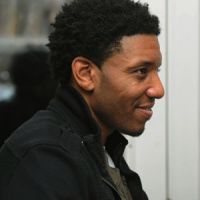
Dax-Devlon Ross is the author of five books and has written essays and articles for a range of publications, including Time and the New York Times. He is a non-profit higher-education consultant and the executive director of After-School All-Stars NY-NJ. You can find him at daxdevlonross.com.




